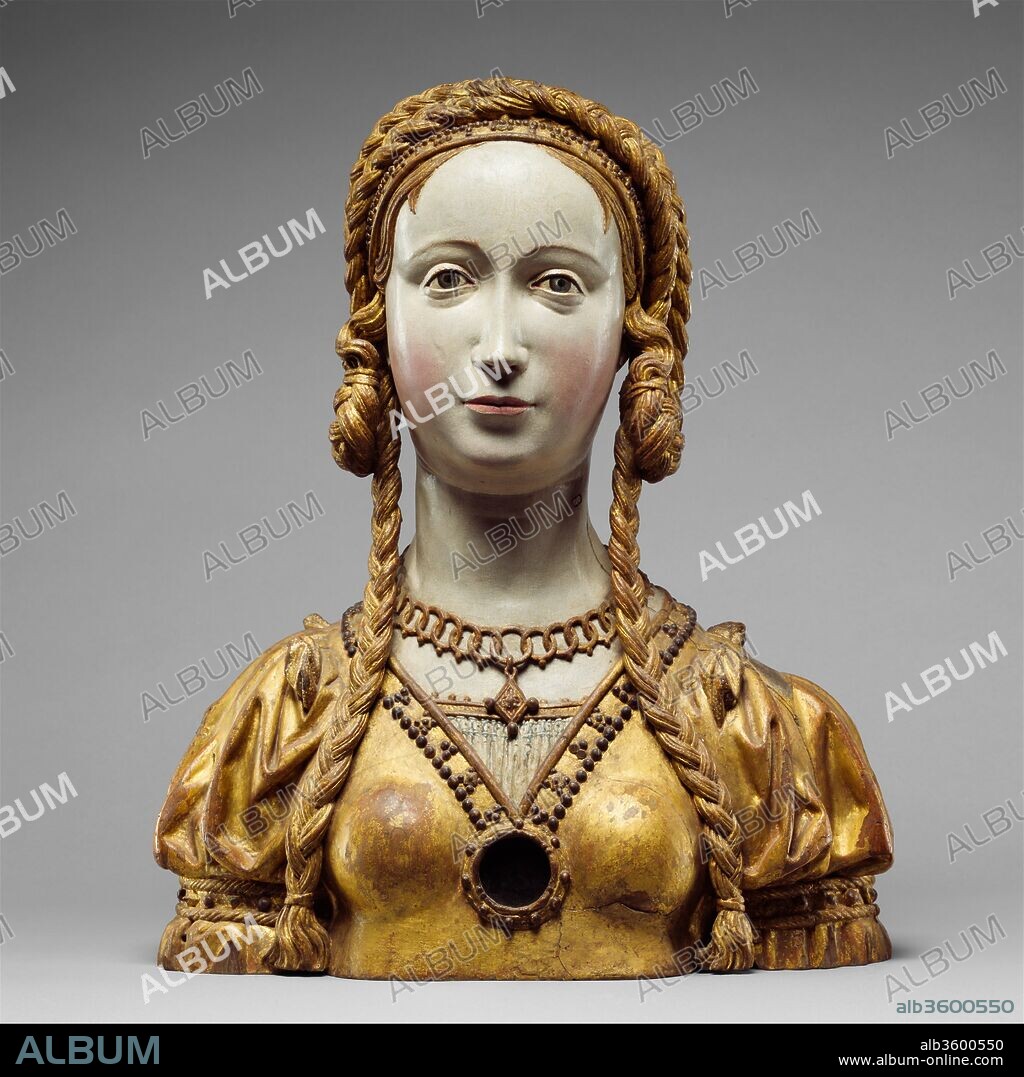alb3600550
Reliquary bust of a companion of Saint Ursula

|
Add to another lightbox |
|
Add to another lightbox |



Title:
Reliquary bust of a companion of Saint Ursula
Caption:
Reliquary bust of a companion of Saint Ursula. Culture: Belgian, possibly Brussels. Dimensions: Height: 17 7/8 in. (45.4 cm). Date: ca. 1520-30.
This piece is one of twenty-three related reliquary busts, many of which have a Spanish provenance. In addition to the compartment visible on the saint's chest, a hinged opening at the top of her head gives access to another relic container.
Although long believed to be Spanish, this series of busts is closer in style to the work of sculptors from the sourthern Lowlands (Brabant or possibly Brussels), whose influence on Spanish sculpture in the late Gothic period was profound. Some examples may well have been carved in Spain by Brabantine artists who migrated to Spain during this period of close political and artistic relations at the end of the fifteenth and in the early sixteenth century. Another possible explanation is that the Hapsburg emperor Charles V donated the pieces to Spanish churches, or that Spanish officials at his court in Brussels acquired the pieces and brought them back to Spain.
Technique/material:
Oak, polychromed and gilt on plaster ground; glass opening for relic
Museum:
Metropolitan Museum of Art, New York, USA
Credit:
Album / Metropolitan Museum of Art, NY
Releases:
Model: No - Property: No
Rights questions?
Rights questions?
Image size:
3981 x 3982 px | 45.4 MB
Print size:
33.7 x 33.7 cm | 13.3 x 13.3 in (300 dpi)
Keywords:
BELGIUM • BRUSSELS • BUSTS • CEREMONIAL OBJECTS • ENCINA • EUROPE • EUROPEAN SCULPTURE AND DECORATIVE ARTS • FIGURES • GILT • GLASS • METROPOLITAN MUSEUM OF ART, NEW YORK, USA • OAK • OAK, POLYCHROMED AND GILT ON PLASTER GROUND; GLASS OPENING FOR RELIC • PLASTER • POLICROMIA • POLYCHROMY • RELICS • RELIQUARIES • SCULPTURE • WOOD
 Pinterest
Pinterest Twitter
Twitter Facebook
Facebook Copy link
Copy link Email
Email

